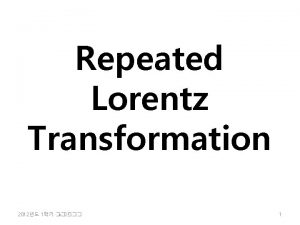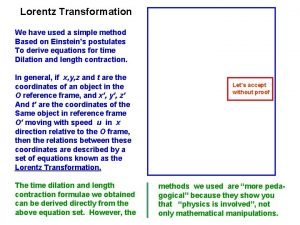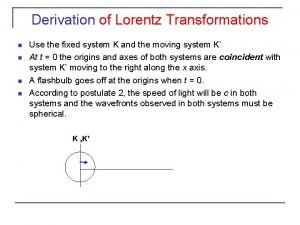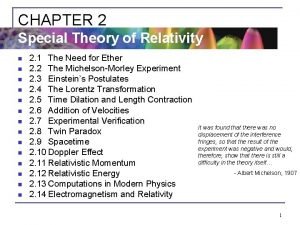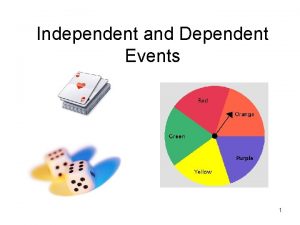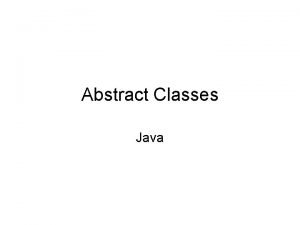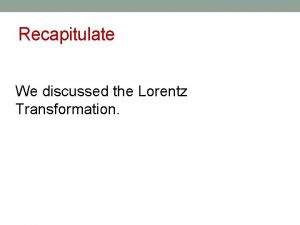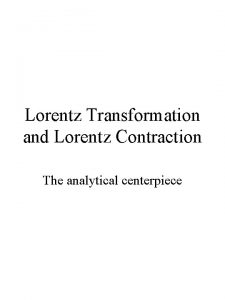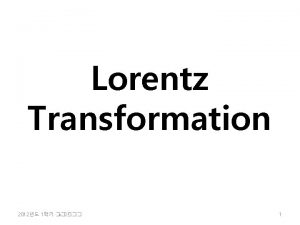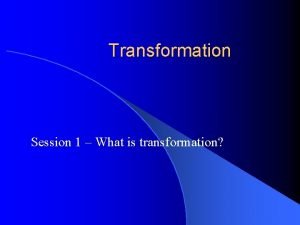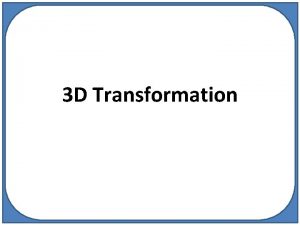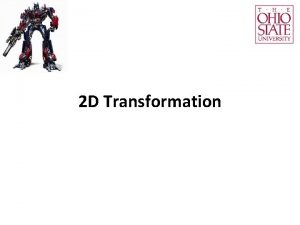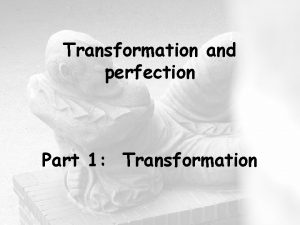The Lorentz Transformation Section 4 Every event has





















- Slides: 21

The Lorentz Transformation Section 4

Every event has 4 coordinates • x, y, z, t in the K system • x’, y’, z’, t’ in the K’ system What are the formulas that transform from one set to the other?

Transformation must leave interval s unchanged. • s = interval between world points (events) in 4 space.

A rotation in 4 -D x, y, z, ct coordinate system is a transformation that leaves the interval unchanged. In 3 D we can resolve any rotation into a sequence of rotations in 3 planes. In 4 D, every rotation can be resolved into a sequence of rotations in six planes: xy, yz, zx, (The usual ones from 3 D) tx, ty, tz. (Three new planes)

Consider tx plane • y, z, coordinates don’t change. • Transform must leave (ct)2 – x 2 unchanged • That is the square of interval from origin in tx plane to point (ct, x) ct x

Formula for a rotation in the x-t plane that leaves c 2 t 2 -x 2 unchanged is or

Y = “angle” of rotation (or boost parameter, or rapidity) This the correct transformation because it conserves the interval Hyperbolic functions appear instead of trig functions because 4 -space is pseudo-Euclidean

If two frames move relative to each other along their mutual x axes… …then only x and t are subject to transformation.

We already have the transformation formula, but we don’t know Y in terms of V. Apply the formula to the motion of the origin of K’ (the point x’ = 0). That gives the coordinates in K of the K’ origin: Since x/t = V, tanh Y = V/c.

If tanh Y = V/c, then

Formula for rotation in x-t plane becomes

Lorentz transformation Inverse formulae: V -V swap primes

Limit c ®¥ gives Galileo transform with absolute time.

For V > c, coordinates and time are imaginary. Denominators go to zero if V = c.

Small velocities, V<<c Gallilean transform for x But non-absolute time

Suppose a rod is at rest in frame K and parallel to X-axis. The length in K is Dx = (x 2 – x 1) = proper length of rod. x 2 x 1 Coordinates of the ends of the rod. What is the length of the same rod in K’? First find the coordinates x 1’ and x 2’ at the same instant t’.

Let proper length Dx = l 0. (Proper length is always measured in the rest frame of the object. ) LORENTZ CONTRACTION.

Lorentz Contraction If rod is moving, it will appear shorter to an observer at rest.

Since Dy and Dz don’t change, volume transforms according to Proper volume

On a clock at rest in K’, two events at the same location x’, y’, z’ are separated by a time interval Dt’ = t 2’ – t 1’ What is the time interval between the same two events in the K system? Proper time interval for the events Time dilation

The Galilean transform is commutative. The combined result of two successive tranforms V 1 and V 2 does not depend on the order. Lorentz transforms do not commute, unless V 1 || V 2. Rotations about different axes depend on the order.
 Every picture has a story and every story has a moment
Every picture has a story and every story has a moment Every nation and every country has its
Every nation and every country has its Lorentz transformation matrix
Lorentz transformation matrix Lorentz transformations
Lorentz transformations Proof of lorentz transformation
Proof of lorentz transformation Lorentz transformation equation derivation
Lorentz transformation equation derivation Lorentz transformation equation
Lorentz transformation equation Microsoft empower every person
Microsoft empower every person Every knee shall bow every tongue confess
Every knee shall bow every tongue confess Every rotarian every year
Every rotarian every year Every nation and every country
Every nation and every country Every child every day
Every child every day Near miss events
Near miss events Compound probability examples
Compound probability examples Independent or dependent
Independent or dependent Dependent events examples
Dependent events examples 5 w's event management
5 w's event management Bridge breaks in central java the text tells us about
Bridge breaks in central java the text tells us about Language features of news item text
Language features of news item text Every nation has its own
Every nation has its own Every choice has a cost
Every choice has a cost Assuming card is the base class of valentine
Assuming card is the base class of valentine


